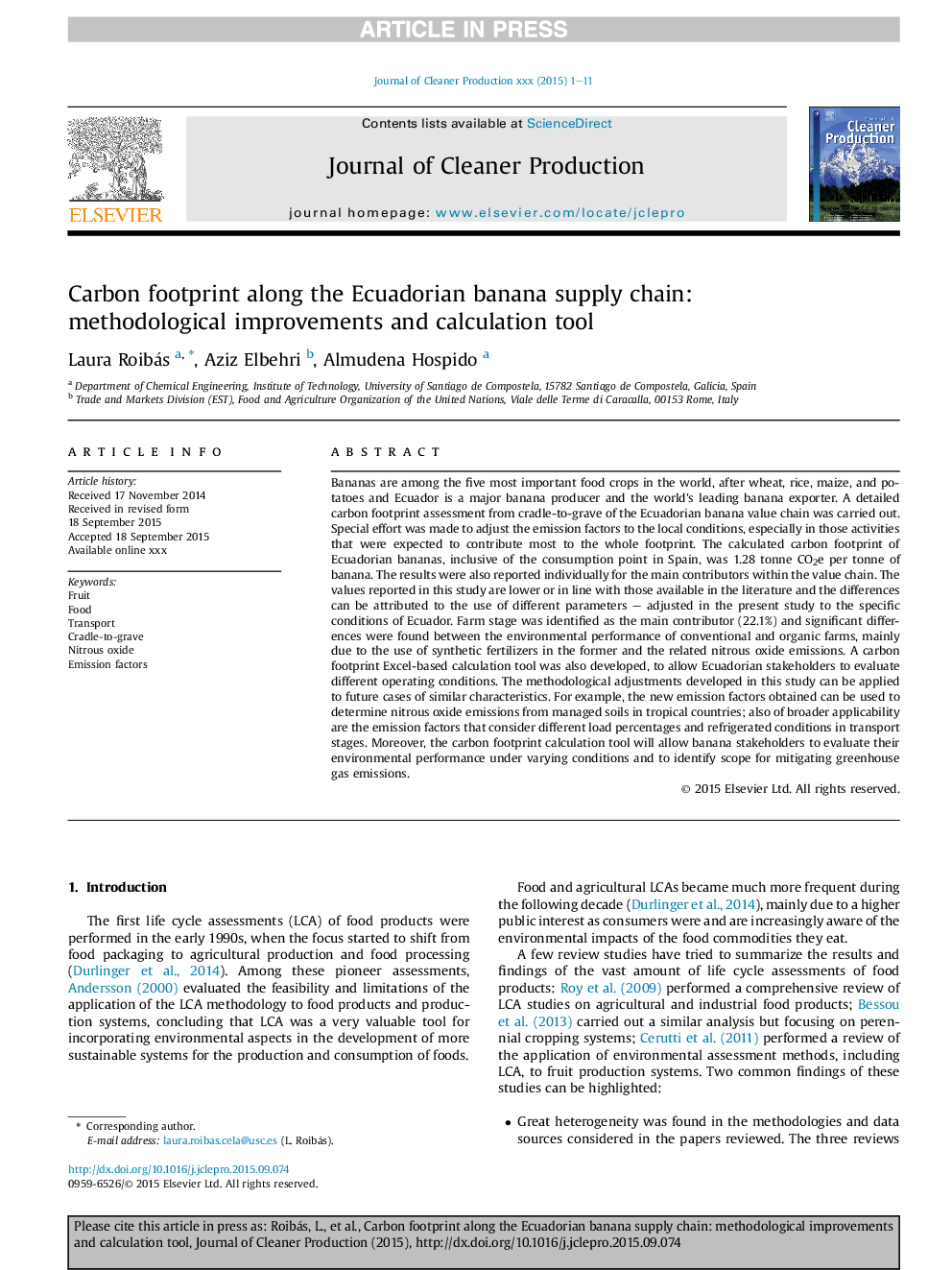| Article ID | Journal | Published Year | Pages | File Type |
|---|---|---|---|---|
| 10687833 | Journal of Cleaner Production | 2016 | 11 Pages |
Abstract
Bananas are among the five most important food crops in the world, after wheat, rice, maize, and potatoes and Ecuador is a major banana producer and the world's leading banana exporter. A detailed carbon footprint assessment from cradle-to-grave of the Ecuadorian banana value chain was carried out. Special effort was made to adjust the emission factors to the local conditions, especially in those activities that were expected to contribute most to the whole footprint. The calculated carbon footprint of Ecuadorian bananas, inclusive of the consumption point in Spain, was 1.28 tonne CO2e per tonne of banana. The results were also reported individually for the main contributors within the value chain. The values reported in this study are lower or in line with those available in the literature and the differences can be attributed to the use of different parameters - adjusted in the present study to the specific conditions of Ecuador. Farm stage was identified as the main contributor (22.1%) and significant differences were found between the environmental performance of conventional and organic farms, mainly due to the use of synthetic fertilizers in the former and the related nitrous oxide emissions. A carbon footprint Excel-based calculation tool was also developed, to allow Ecuadorian stakeholders to evaluate different operating conditions. The methodological adjustments developed in this study can be applied to future cases of similar characteristics. For example, the new emission factors obtained can be used to determine nitrous oxide emissions from managed soils in tropical countries; also of broader applicability are the emission factors that consider different load percentages and refrigerated conditions in transport stages. Moreover, the carbon footprint calculation tool will allow banana stakeholders to evaluate their environmental performance under varying conditions and to identify scope for mitigating greenhouse gas emissions.
Related Topics
Physical Sciences and Engineering
Energy
Renewable Energy, Sustainability and the Environment
Authors
Laura Roibás, Aziz Elbehri, Almudena Hospido,
